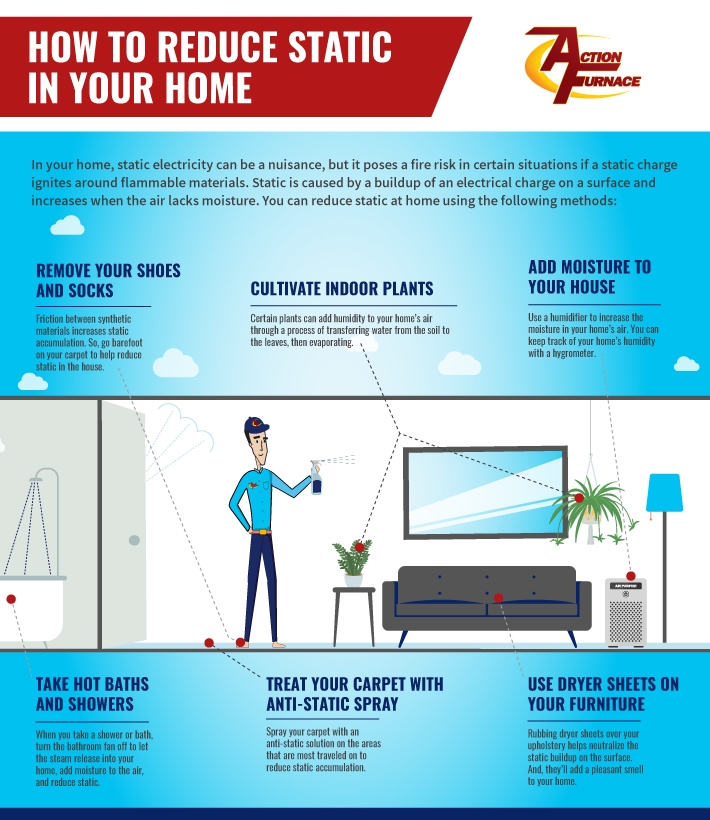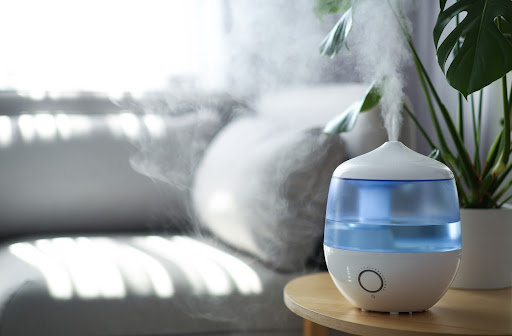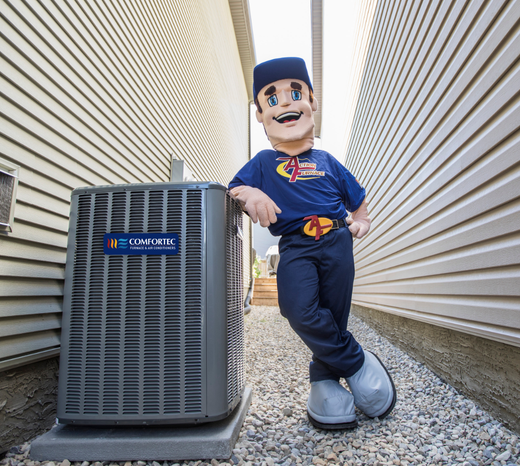Air Quality, Home Comfort, Maintenance
Have you experienced that uninvited zap from a doorknob in your house? Or you can’t get your hair under control or clothes to stop clinging? Stati...
Have you experienced that uninvited zap from a doorknob in your house? Or you can’t get your hair under control or clothes to stop clinging? Static electricity may be the culprit.
Static electricity around the house can be a nuisance, but in certain situations, it can be a fire risk if a static charge ignites around certain solvents or other flammable materials.
To reduce static electricity in your home, we’ve compiled a list of methods—some of which might make you feel extra cozy at home.

What Creates Static Electricity?
Think back to science class when you learned how all physical objects are made up of atoms, which break down into protons, electrons, and neutrons. Protons and electrons have charges opposite each other: protons are positive, and electrons are negative. Opposite charges attract, like a magnet to a refrigerator, and the same charges repel, like a magnet to another magnet.
Now, electrons can move from one surface to another. Through friction, electrons transfer and accumulate on one surface, causing a static charge to build up. This buildup needs to discharge through another surface, and when it does, it produces a shock of static electricity.
For example, let’s say you shuffle your feet across the carpet in wool socks, increasing the electrons in your body. These electrons can’t live in you forever—they need somewhere to go. So when you reach for the metal doorknob, they discharge, resulting in a startling electric shock.
Static in the home increases when humidity drops and the air is dry and cold (hello, Albertan winters!) because the dry air makes it harder for electrons to move around. Cranking the heat in the winter reduces the humidity in the air, encouraging static to accumulate.
Certain synthetic materials also add to static, like rubber, wool, and polyester—so try to avoid shuffling around on your carpet in rubber-soled shoes.
Ways to Reduce Static in Your House

Add Moisture to Your House
When the air in your home is dry, more static can build up. We’re not suggesting you spray a garden hose inside, but consider investing in a humidifier to add moisture to your home’s atmosphere (among other benefits).
See also: The Alberta Humidifier Buyer's Guide
Getting moisture in the air can be as simple as simmering a large pot of water on the stove, allowing the steam droplets to increase the humidity. But, a more efficient solution is a whole-home humidifier that allows you to control humidity levels throughout your entire house.
Hot tip (or is it a humid tip?): Keep track of your home’s humidity with a hygrometer, which is like a thermometer for moisture. Ideally, your home’s air hovers around 40–50% humidity, staying on the lower end during the winter months to prevent condensation on your windows.
Cultivate Indoor Plants
Plants enhance your living space, but did you know they can also help reduce static by adding moisture to your air? Through a process called evapotranspiration, the water travels from the soil, through the stem and leaves, and then evaporates into your home’s air (just make sure you water your plants!).
You don’t need to go too crazy on the greenery (unless you want to), but here are some excellent indoor plants to boost the humidity in your home:
- Spider plant: a hanging plant that grows well in bright, indirect sunlight
- Jade plant: a succulent plant that likes to be in a bright, sunny spot
- English ivy: a hanging plant that needs bright light and slightly dry soil
- Rubber plant: a tropical tree that likes partial sun and can survive cooler temperatures
- Peace lily: a tropical evergreen that blooms a white flower in the summer
Remove Your Shoes and Socks
Synthetic materials like polyester, rayon, silk, and wool are more prone to static buildup when rubbed against another synthetic surface. In essence, your socks and shoes comprising non-organic materials will quickly become electrically charged when rubbed against your carpet.
Going barefoot reduces static buildup—and it feels nicer, too! But, if you would rather not remove your socks, try to pick your feet up as you walk across your carpet and avoid shuffling.
If you must wear shoes, stick with leather, not rubber. And if you must wear socks, stick with cotton, not wool. And, put those silk pyjamas back in the closet until summertime.
Treat Your Carpet with Anti-Static Spray
If you have carpet, the chances of having static in your home are higher than those who have wood floors. Invest in a commercially sold anti-static spray for your carpet, or make your own by diluting fabric softener in a spray bottle.
Use your anti-static spray on the most commonly walked-on areas of your carpet. There’s no need to spray hard-to-reach corners since nobody walks there anyway.
Use Dryer Sheets on Your Furniture
This tip is a handy method, especially if you already have dryer sheets in your laundry room. These sheets are neutralizers for odours and electrical charges, which is why you toss them in the dryer to ensure clothes smell fresh and don’t cling.
When you rub dryer sheets over your upholstery, it helps reduce static on your furniture.
Take Hot Baths and Showers
When you turn up the heat in your bathroom, the steam from the hot water will add moisture to your home’s air. So, you can turn the fan off and let steam pour out of the shower to reduce static by adding humidity. Likewise, if you take a hot bath, allow the water to cool down before you drain it to maximize the heat coming off the water.
Avoid the Shock
Static in your home increases in cool, dry temperatures when humidity levels decrease. You can avoid this by adding moisture to your home’s air with in-home humidity control, indoor plants, and super hot showers. And use anti-static sprays, and avoid wearing synthetic fibres when walking on carpet.
If you’re ready to get rid of static in your home, reach out to the team at Action Furnace to find out how we can help.



